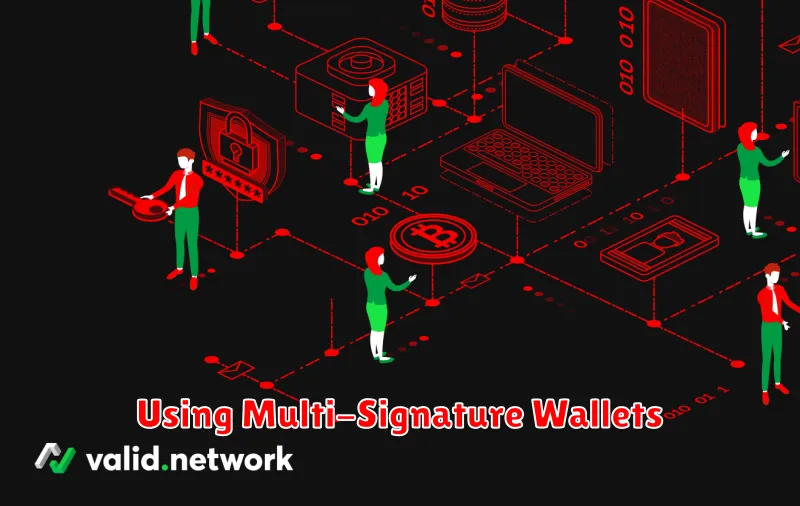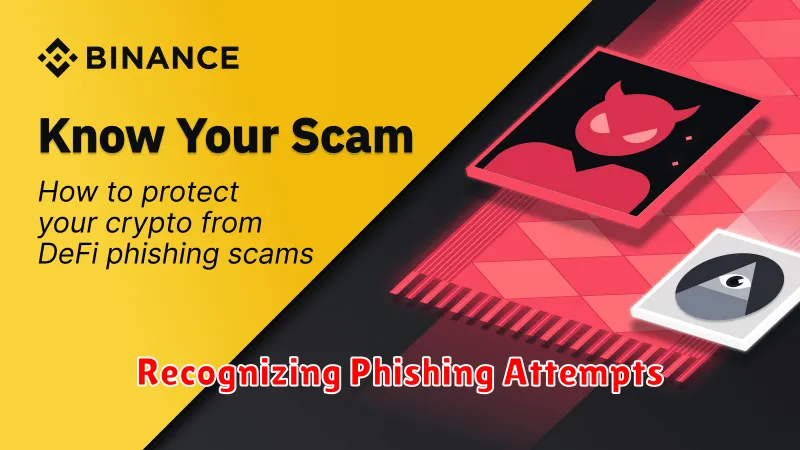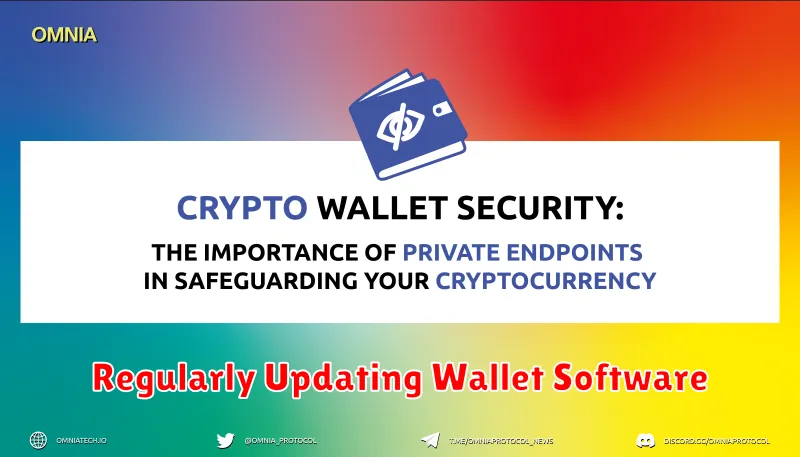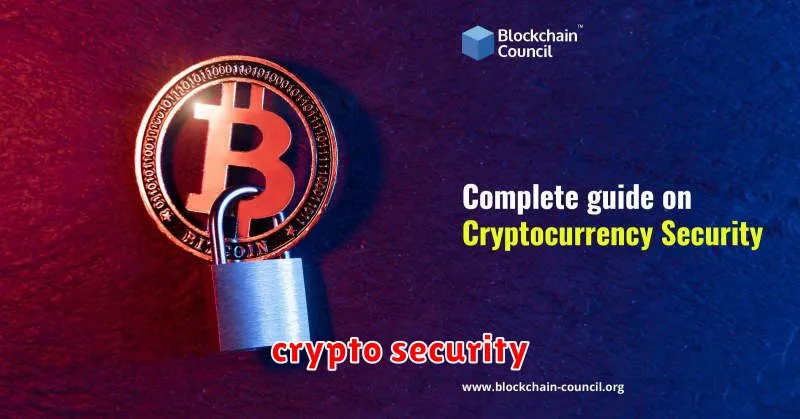Are you tired of hearing about crypto hacks and scams? Worried about losing your hard-earned digital assets? You’re not alone! In this comprehensive guide, we’ll explore practical and effective strategies to protect your crypto from malicious actors. Learn how to secure your wallets, identify phishing scams, and implement robust security measures to safeguard your crypto investments. Discover the best practices for crypto security and take control of your digital future. Let’s dive in and learn how to keep your crypto safe!
Why Crypto Wallet Security Matters
Your cryptocurrency wallet is the gateway to your digital assets. Without robust security measures, your hard-earned crypto is vulnerable to theft and irreversible loss. This isn’t just about losing money; it’s about losing control of your financial independence.
Hackers are constantly developing sophisticated methods to exploit vulnerabilities in wallets. A compromised wallet can lead to the complete depletion of your funds, with little to no chance of recovery. The decentralized nature of cryptocurrencies, while offering benefits, also means that there’s often no central authority to help you retrieve your stolen assets.
Beyond outright theft, compromised wallets can lead to identity theft and privacy violations. Hackers can use your stolen private keys to access other online accounts associated with your crypto wallet, leading to a cascade of security breaches. Protecting your wallet is not simply about safeguarding your cryptocurrency; it’s about protecting your overall digital identity and financial security.
In short, the security of your crypto wallet is paramount. Investing time and effort in securing your wallet is an investment in protecting your financial future. The consequences of negligence can be devastating and potentially unrecoverable. Therefore, prioritizing strong security practices is not optional – it’s essential.
Using Multi-Signature Wallets

One of the most effective ways to protect your cryptocurrency from hackers is by using a multi-signature wallet. Unlike standard wallets requiring only one key for authorization, multi-signature wallets necessitate multiple signatures from different individuals or devices before a transaction can be executed.
This added layer of security significantly reduces the risk of unauthorized access. Even if one key is compromised, the hackers won’t be able to move your funds without the other required signatures. This makes it much harder for hackers to steal your crypto, even with sophisticated phishing attacks or malware.
How it works: You can set up a multi-signature wallet with a predetermined number of required signatures (e.g., 2 out of 3, 3 out of 5). This means that at least that many signatures are needed to approve any transaction. You can distribute these keys across multiple devices, or even share them with trusted individuals.
Benefits: Besides enhanced security, multi-signature wallets offer increased control and peace of mind. They are especially beneficial for businesses or individuals managing large sums of cryptocurrency, providing a robust safeguard against theft or loss.
Choosing a Multi-Signature Wallet: Several reputable providers offer multi-signature wallet solutions. Research and select a provider with a strong reputation for security and reliability before entrusting your crypto to them. Remember to carefully follow the setup instructions and security best practices provided by your chosen provider.
The Importance of Two-Factor Authentication

In the world of cryptocurrency, security is paramount. While strong passwords are a good first step, they’re not enough to fully protect your digital assets. That’s where two-factor authentication (2FA) comes in. It adds an extra layer of security, making it significantly harder for hackers to access your accounts even if they manage to obtain your password.
2FA works by requiring two forms of verification before granting access. Typically, this involves a password (something you know) and a code generated by an authenticator app on your phone or a code sent to a registered email address or phone number (something you have). This significantly reduces the risk of unauthorized access, even if your password is compromised.
Imagine a scenario where a hacker obtains your password through phishing or a data breach. With 2FA enabled, they still won’t be able to access your crypto because they lack the second factor of authentication. This added security dramatically reduces the chances of successful hacking attempts, protecting your valuable digital holdings.
Enabling 2FA is a simple yet incredibly effective step you can take to bolster your cryptocurrency security. Most exchanges and wallets offer this feature; take the time to activate it on all your accounts. It’s a small effort that provides substantial protection against a significant threat.
Don’t underestimate the importance of 2FA. It’s a crucial component of a robust security strategy for anyone holding cryptocurrency. Make it a priority today to safeguard your investment.
Offline vs Online Wallets
Choosing the right wallet is crucial for cryptocurrency security. The main choice lies between online and offline wallets, each with its own strengths and weaknesses regarding security.
Online wallets, also known as hot wallets, are accessible via the internet. They offer convenience and ease of use, perfect for frequent transactions. However, this accessibility makes them vulnerable to hacking, phishing scams, and malware. Security risks are significantly higher with online wallets.
Offline wallets, or cold wallets, store your cryptocurrencies on a device that’s not connected to the internet. This significantly reduces the risk of hacking, as the private keys are not exposed to online threats. Examples include hardware wallets and paper wallets. While offering superior security, they lack the convenience of online access and can be more complex to use.
The best choice depends on your needs and risk tolerance. If you frequently transact with crypto, an online wallet might suffice, but prioritize strong security measures like two-factor authentication. For larger holdings or long-term storage, an offline wallet is strongly recommended for maximum protection against theft.
Recognizing Phishing Attempts

Phishing is a common tactic used by hackers to steal your cryptocurrency. They often disguise themselves as legitimate organizations or individuals via email, text message, or even social media. Be extremely cautious of unsolicited communications requesting your private keys, seed phrases, or login credentials.
Look for red flags. Legitimate companies will never ask for this sensitive information via email or text. Suspicious emails often contain poor grammar, spelling errors, or generic greetings. Links may lead to fake websites that mimic legitimate platforms. Hover over links before clicking to check their actual destination.
Verify the sender. If you’re unsure about an email or message’s authenticity, independently verify the sender’s identity through official channels. Do not use contact information provided in the suspicious communication.
Never click suspicious links. If you receive an email or message requesting your login information or other sensitive data, do not click any included links. Instead, navigate directly to the official website of the company or service in question, using a trusted browser.
Enable two-factor authentication (2FA) on all your crypto exchanges and wallets. This adds an extra layer of security, making it significantly harder for hackers to access your accounts, even if they obtain your password.
Educate yourself. Stay informed about the latest phishing scams and techniques. Regularly review security best practices to keep your cryptocurrency safe.
Regularly Updating Wallet Software

Keeping your cryptocurrency safe requires vigilance, and a crucial aspect of this is maintaining up-to-date wallet software. Regular updates patch security vulnerabilities that hackers constantly exploit. These updates often include crucial bug fixes and enhanced security protocols that strengthen your wallet’s defenses against malicious attacks.
Outdated wallet software is a major security risk. Hackers actively search for known vulnerabilities in older versions to gain access to users’ funds. By neglecting updates, you’re essentially leaving your crypto exposed to theft.
The process of updating your wallet software varies slightly depending on the specific wallet you use, but it’s generally straightforward. Check your wallet’s settings or help section for instructions. Most wallets will automatically notify you when an update is available. Always download updates directly from the official source to avoid downloading malware disguised as legitimate updates.
In short, consistent updates are non-negotiable for cryptocurrency security. Make it a habit to check for and install updates promptly. This simple step significantly reduces your risk of becoming a victim of a cryptocurrency hack.
Avoiding Public Wi-Fi for Transactions
Public Wi-Fi networks are notoriously insecure. They often lack encryption, making your data vulnerable to man-in-the-middle attacks. Hackers can easily intercept your crypto transactions, stealing your private keys, seed phrases, or even your entire cryptocurrency holdings.
To safeguard your crypto, never use public Wi-Fi for any transaction involving your cryptocurrency. This includes accessing your exchanges, wallets, or any other platform that handles your digital assets. The risk of compromise is simply too high.
Instead, rely on secure, private networks like your home Wi-Fi or a trusted VPN. A Virtual Private Network (VPN) encrypts your internet traffic, making it much harder for hackers to intercept your data, even if you are on a public network. Consider this a crucial layer of security for all your online activities, especially those involving cryptocurrency.
Remember, protecting your crypto is paramount. By avoiding public Wi-Fi for transactions, you significantly reduce your risk of falling victim to hackers and losing your hard-earned digital assets. Prioritize security above convenience.
How to Recover Hacked Crypto Wallets
Recovering your hacked crypto wallet is a critical process that requires immediate action. The first step is to secure your accounts by changing all passwords on related platforms (exchanges, etc.) and enabling two-factor authentication (2FA) where possible. This prevents further unauthorized access.
Next, immediately contact your exchange or wallet provider’s support team. Explain the situation and follow their recovery protocols. They may have specific procedures or tools to help regain access or recover funds. Keep meticulous records of all communication with them.
If you used a hardware wallet and it was compromised, the recovery process may differ depending on the device. Refer to the manufacturer’s instructions. Backup phrases are crucial here – treat them with utmost secrecy.
For software wallets, the recovery process will vary depending on the specific type of wallet. Many use seed phrases or private keys. Never share these with anyone, even support staff. Legitimate support will never request them.
Report the hacking incident to the relevant authorities, including law enforcement. While recovering your funds is the priority, reporting the crime helps prevent others from becoming victims.
Consider consulting a cybersecurity professional experienced in crypto recovery. They can offer expert guidance and potentially help in complex recovery scenarios. Remember that not all hacks are recoverable; the speed and thoroughness of your response significantly increase your chances of success.

